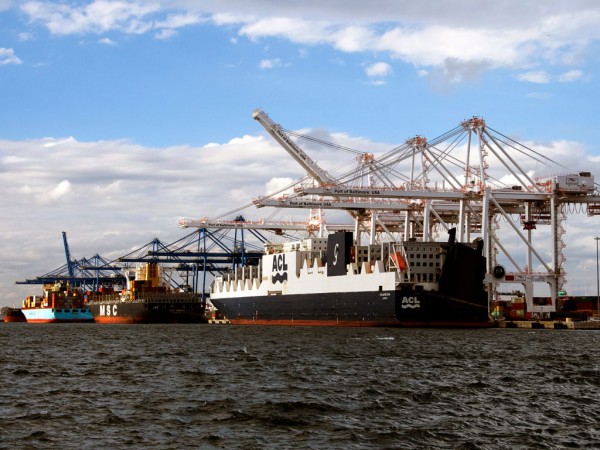Moving containers and vehicles alike at record paces, the Port of Baltimore is adding more 50-foot-deep berth space plus bringing on additional land to ensure continuing ability to efficiently link global markets with consumers of the Mid-Atlantic region and beyond.

“We’ve had a pretty remarkable year,” James J. White, executive director of the Maryland Port Administration, unassumingly told the American Journal of Transportation, citing all-time highs in cargo activity, as well as advancement of enhancements to accommodate future growth.
“We just think the Panama Canal is going to continue to be of great use for the New Panamax-type vessels, and we always want to be ahead of that curve,” White said, noting that the current berth utilization rate at Seagirt is still a somewhat modest 40 percent.

Indeed, the Port of Baltimore has consistently been ahead of the proverbial curve, banking on positive impacts related to Panama Canal expansion and the advent of increasingly large containerships deployed by carrier consortia. Following opening of expanded Panama Canal locks in mid-2016, bigger boxships, some with capacities of more than 8,000 twenty-foot-equivalent units, have been coming directly to Baltimore.
“We thought we would do better than other East Coast ports because we have such a big consumer market here,” White said. “The challenge we had in the past was that, with smaller ships, the ship owners didn’t want to come up and down the [Chesapeake] Bay.
“If a ship owner had a 4,000-TEU ship with 500 containers on it for our consumption, they’d prefer to discharge them in Virginia or New York and then barge or truck them in,” he continued, going on to reference today’s ocean carrier mega-alliances. “Now, you have four big partners on bigger ships and now you’ve all of a sudden got 2,000 containers on one ship for discharge for consumption here, making all the sense in the world to bring the ship here.”
Such activity is reflected in Port of Baltimore statistics. For example, the port’s public marine terminals in the month of May handled 90,152 TEUs of container activity and 61,058 autos and light trucks – each of those figures being the highest for any month in the port’s 312-year history.
In the 12-month period ended April 30, 2018, the state-owned port’s public marine terminals handled 1,000,571 TEUs worth of containers, representing Baltimore’s first surpassing of the 1 million TEU milestone in any 12-month span.
In calendar 2017, the Port of Baltimore’s public and private auto terminals combined to see moves of a record 807,194 cars and light trucks, marking the seventh straight year of Maryland handling more such units than any other U.S. port, and such activity is up 5.2 percent through the first half of 2018, further cementing the port’s No. 1 U.S. ranking in such ro/ro action.

During the Great Recession, White said, people were “just Band-Aiding their cars, hoping to get through another month.” But, with the turnaround of the U.S. economy, as well as genesis of more technologically advanced and fuel-efficient vehicles, demand for automobile imports has taken off. Also, he noted, the rebound of European economies has led to significant gains in heavy equipment exports.
The Port of Baltimore’s latest ro/ro service addition came in March, with Höegh Autoliners initiating monthly service from New Zealand and Australia.
Meanwhile, the port’s ro/ro-focused Fairfield Marine Terminal is in the process of growing by 7 acres with the fill-in of a wet basin under a contract with the Maryland Board of Public Works, with a boost from a federal grant.
But what White described as “the big homerun” on the land front was the 2017 purchase of 70 acres to facilitate expansion of operations at the Seagirt Marine Terminal. Furthermore, early this year, Ports America Chesapeake added six more rubber-tired gantries, augmenting the 16 RTGs previously in service at the Seagirt facility.
And land acquisition activity has not been limited to the Maryland Port Administration itself. Tradepoint Atlantic, which is developing a multimodal logistics center just southeast of Port of Baltimore container facilities, in May acquired the 150-acre Sparrows Point Shipyard property, increasing its total footprint to 3,250 acres, providing additional space for near-berth warehousing and marine operations.
White remains optimistic concerning the immediate future, with tariffs recently initiated by the Trump administration not yet having an impact.
“The remainder of this year and through 2019 is going to look good for us,” White said. “You never know what’s going to happen with these tariffs, but we’re not feeling anything yet. It’s too early. If something’s going to start to change, I would expect to see it probably the end of third quarter or beginning of the fourth quarter this year, but, right now, we’re still moving strong in containers and automobiles.”





